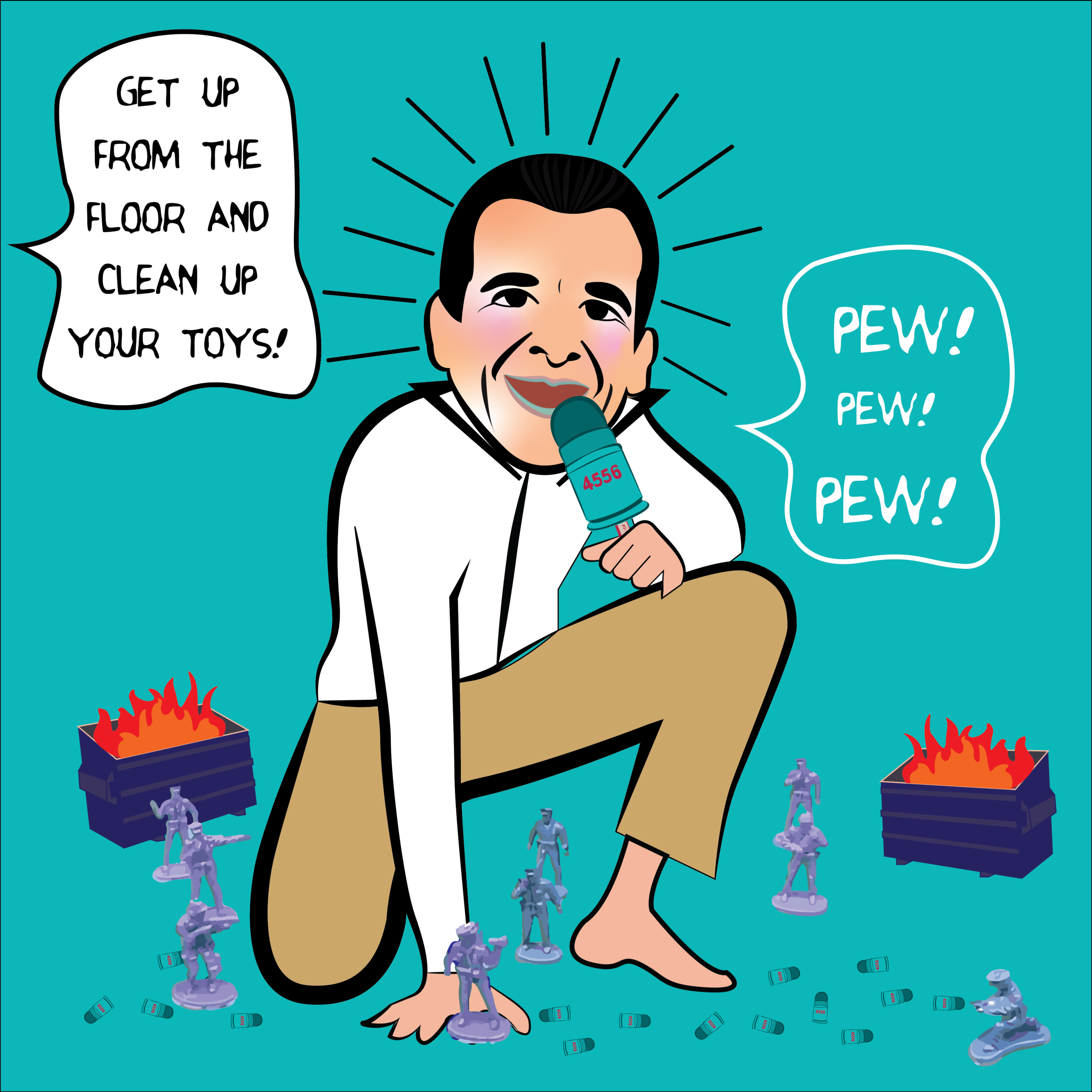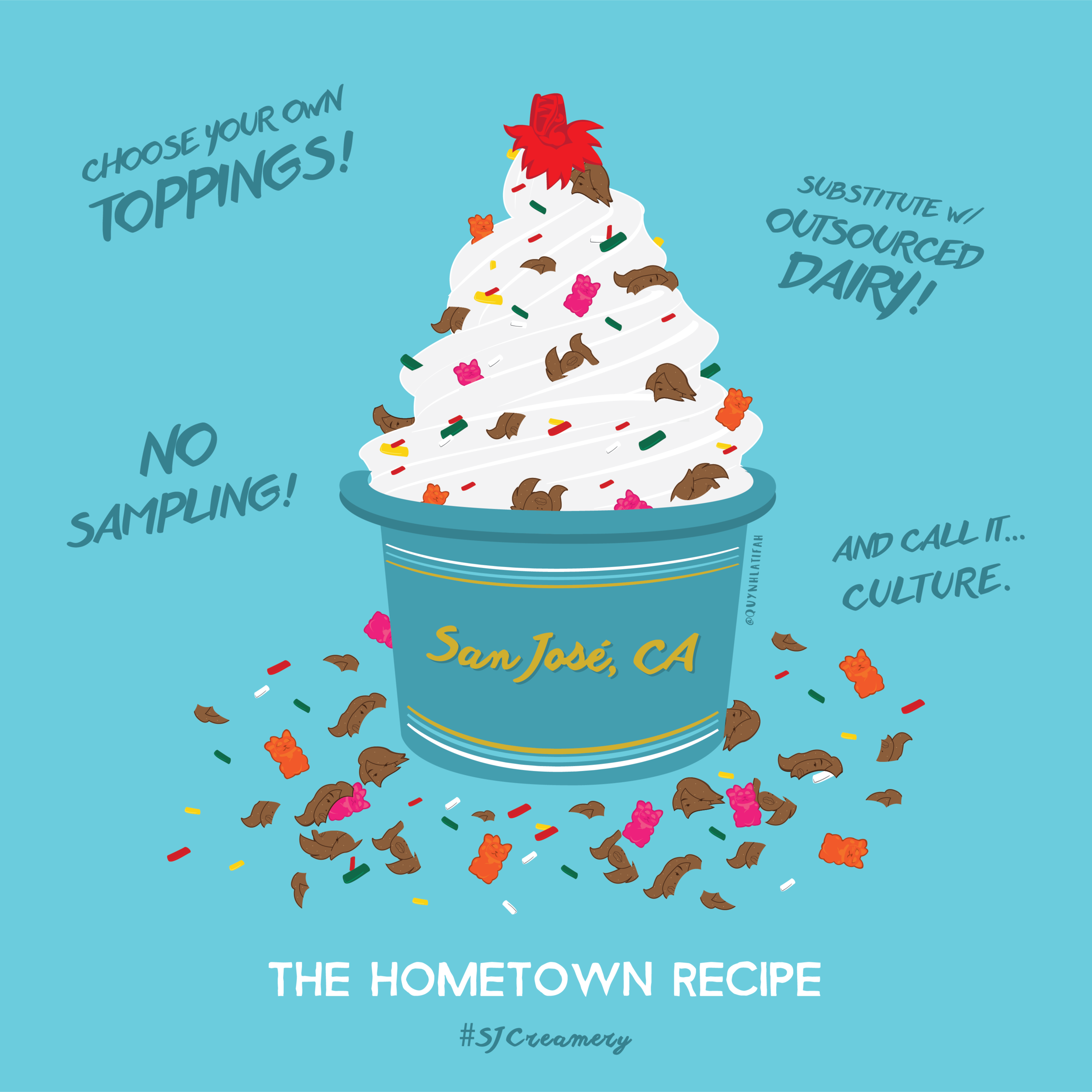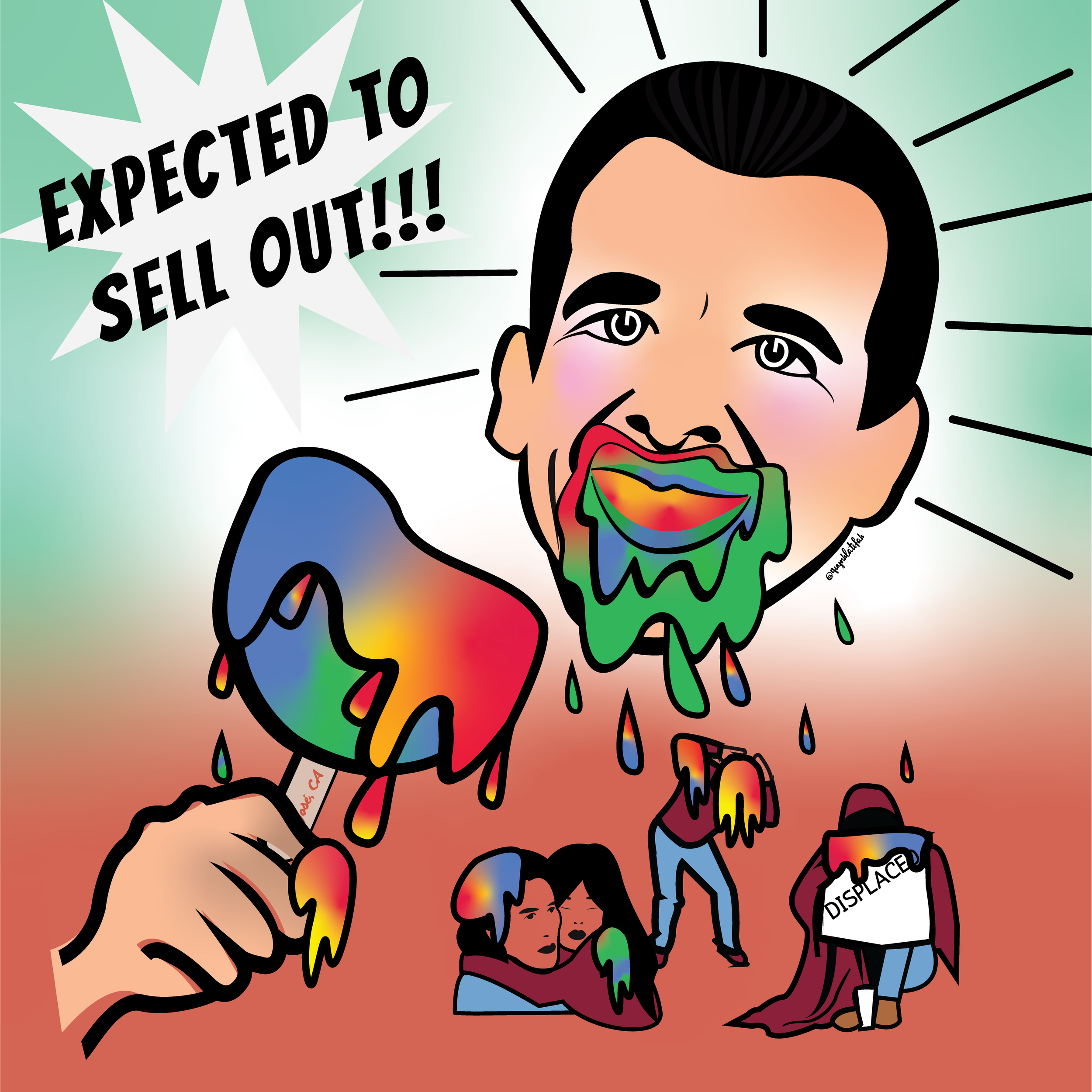SJ Creamery
SJ Creamery
“Taste the Culture”
Visual commentary about the social, political, and everyday happenings
of life in San José, CA and beyond.
PERSONAL PROJECT / POLITICAL CARTOON / SATIRE
- Sj Creamery News -
- THE MENU -
click on the images to read the ingredients














